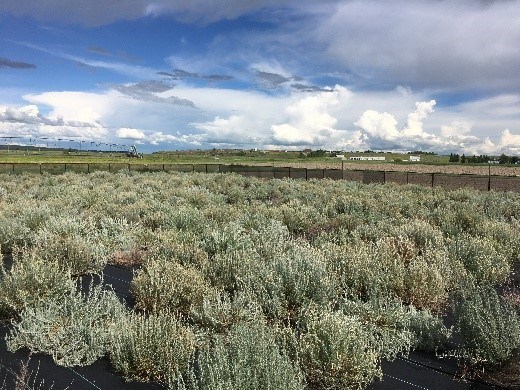Many Canadian cattle producers rely on introduced species of foraged plants, such as alfalfa, to feed their animals, but there is a growing interest in native plant species, and there are good reasons as to why.
A group of research scientists at Agriculture and Agri-Food Canada’s (AAFC) Swift Current Research and Development Centre have been working with native forage plants that have a proven history of surviving the extreme climates of the prairie.
Dr. Sean Asselin is one of the researchers that are researching these plants and the benefits that they have on the surrounding environment. Dr. Asselin and his colleagues work together to study the distinctive characteristics of native plant species within the context of agricultural production. In this case, it is looking at native species in foraging systems.
One of the key discoveries is that these native plants could provide a brand-new feed opportunity for the Canadian cattle producers, as well as ecosystem benefits that are great for the environment.
These studies should allow them to develop seed sources that can be utilized by producers if they want to plant distinct species. This would allow for more options in the terms of what species of plant they can put in, it also allows them to use the natural benefits of those native plant species.
These native plant species could provide greater genetic diversity and different mutualisms with the environment. Since these plants have been here for hundreds of thousands of years and they took a long time to adapt to the growing conditions, some of these adaptations include cold tolerance, persistence in the environment, and longevity.
When using native plant species, you will not run into adaptations, which you would run into while using an introduced plant species.
"If we are getting our seed sources from places like Colorado or New Mexico, they may be a native species to North America and a native species to here in Saskatchewan; they are not necessarily adapted because different populations can have different traits. Bringing materials up from down south they do not always have the cold tolerance to survive because they are adapted to down south,” said Dr. Asselin.
“So, we really need to focus on the materials that are already here and take advantage of that genetic diversity, so we have materials that are adapted to this growing region. Otherwise, you can spend a lot of money to plant seeds, but if that plant seed is poor quality or if it is from an area that is too much of an environmental mismatch the results could be very risky.”
The items that Dr. Asselin and his colleagues are studying are as follows:
• Breeding and integration of native plants into agricultural systems.
• The vigour of prairie legumes.
• Landscape genomics in prairie clovers (signals of their genetic adaptation to climate).
• Responses to drought and protein levels of different populations of native forage species relied on by historic Wood and Plains bison.
• How to maintain germplasm (genetic material) on a natural landscape that is being grazed and mowed, as opposed to a controlled laboratory environment.
If you want to learn more about Dr. Asselin’s research and his discoveries go to https://agriculture.canada.ca/en/news-agriculture-and-agri-food-canada/scientific-achievements-agriculture/benefitting-cattle-producers-and-environment-value-native-forages.




